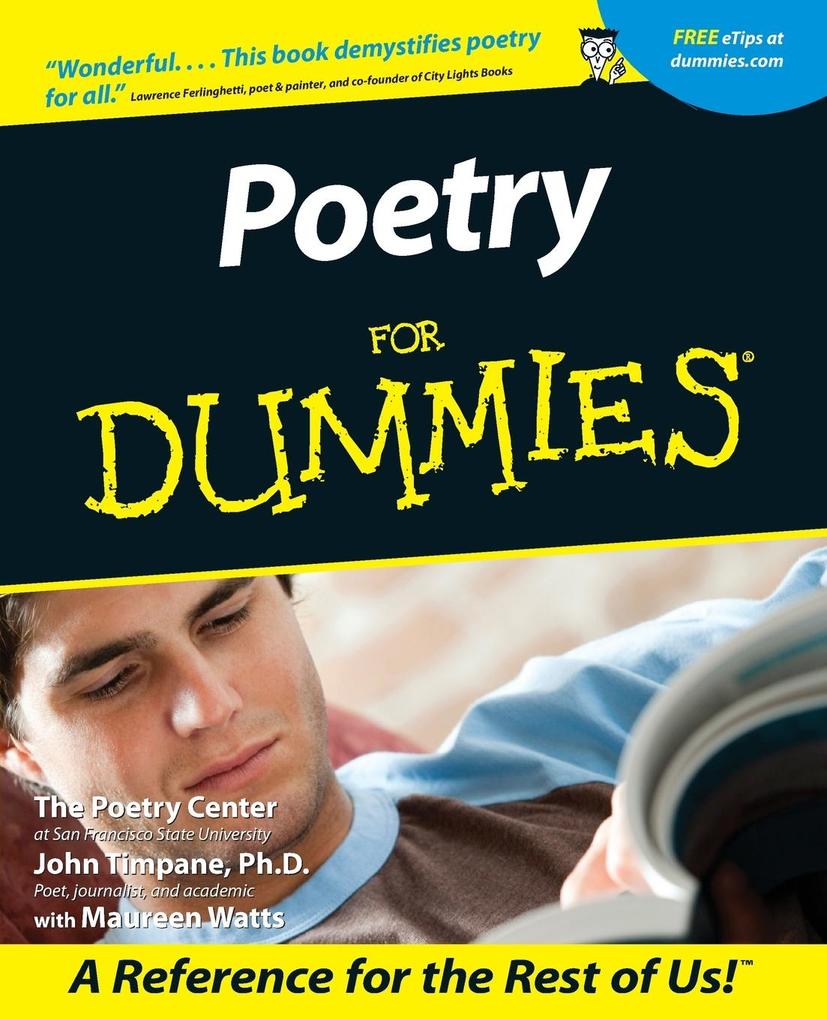Get expert tips on writing your own poems Understand and appreciate the pleasures of poetry Can't tell the difference between an iamb and a trochee? Don't worry! This friendly guide demystifies all that complicated jargon and explains how to truly enjoy poetry. The authors walk you through poetry's history, show you where to find exciting contemporary readings, and provide easy exercises to stimulate your own poetic juices. Praise for Poetry For Dummies > -- Willis Barnstone, author of Sappho: A New Translation and Algebra of Night > -- Ed Taylor, Executive Director, just buffalo literary center Discover how to: > Interpret a poem's possible meanings
Get a handle on poetry through the ages
Find poetry readings near you
Write your own poems Get smart!
@www.dummies.com
- Find listings of all our books
- Choose from many different subject categories
- Sign up for eTips at etips.dummies.com
Inhaltsverzeichnis
Introduction 1
Part I: Reading and Understanding Poetry 7
Chapter 1: Poetry 101 9
Chapter 2: Subject, Tone, and Narrative 31
Chapter 3: Tuning In to Language 41
Chapter 4: The Art of Interpretation 61
Chapter 5: Connecting with Poems from the Past 79
Part II: In the Beginning Was a Poem 91
Chapter 6: An Intelligent Hustle through Poetic History: From the Earliest Poetry to the 1700s 93
Chapter 7: An Intelligent Hustle through Poetic History: The 19th Century to the Present 113
Part III: Writing Poetry: A Guide for Aspiring Poets 139
Chapter 8: Calling the Muse 141
Chapter 9: Writing Open-Form Poetry 157
Chapter 10: Working with Traditional Forms of Verse 169
Chapter 11: Putting Pen to Paper: Writing Exercises for Poets 177
Chapter 12: Going Public with Your Poetry 187
Chapter 13: Getting Published 199
Part IV: The Part of Tens 213
Chapter 14: Ten Myths about Poets and Poetry 215
Chapter 15: Ten Poems Worth Memorizing 225
Chapter 16: Ten Love Poems 233
Part V: Appendixes 241
Appendix A: Glossary 243
Appendix B: Poetry Timeline 255
Appendix C: Resources 273
Permissions 287
Index 295
